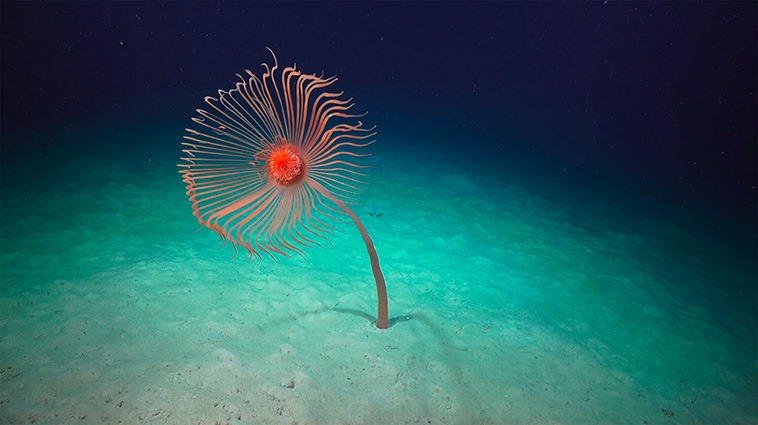ANIMALS
On The Beach, Lost Dog Patiently Stays and Hopeful for His Family Find Him

Meet Simba, an older shepherd mix that harbors an immense love for its owners.
Not long ago, Simba’s owners had to depart on an unplanned journey to attend to a family emergency. In their absence, they hired a dog sitter to care for their beloved pet and bade farewell to Simba. However, while they were away, they received a distressing message indicating that their dog had gone missing.
Tragically, Simba slipped out of an open door soon after its owners’ departure. Despite their immediate efforts to search for the dog, they were unable to locate it. Unbeknownst to them, a community situated 20 miles away had noticed a dog that bore a striking resemblance to Simba sleeping by itself on the beach.
 Image source: SUZETTE HALL
Image source: SUZETTE HALL
Although the Good Samaritan community was uncertain about the identity of the dog, they remained steadfast in their commitment to assist it.
“There were several posts about a dog on the beach,” Suzette Hall, founder of Logan’s Legacy dog rescue, told The Dodo. “All the lifeguards were trying to get him, but he kept running further down the shore.”
Upon arriving at the beach, Hall hauled a sizable trap onto the shore, indicating the spot where Simba had been spotted sleeping. Although the dog was not present as she assembled the trap, she filled it with treats in the expectation that they would entice Simba to return.
“It was pouring rain and pitch black,” Hall said. “So, unfortunately, he got startled and ran.”
 Image source: SUZETTE HALL
Image source: SUZETTE HALL
Despite waiting in the rain for some time, Hall’s efforts to locate Simba were futile. As she lingered, she encountered a nearby resident who provided more assistance than she had anticipated.
“He said that the dog had slept in his garage the night before, so he told me I could set the trap there,” Hall said.
Together, Hall and the neighbor transported the crate from the beach to the garage, resetting it and waiting for Simba to reappear.
“We waited and waited, but he never came back,” Hall said.
 Image source: SUZETTE HALL
Image source: SUZETTE HALL
The following day, a passerby noticed the dog strolling along the shore once more. While Hall was resetting the trap, a different neighbor reached out to inform her that the dog may have an owner. After contacting the individual, Hall was able to connect with Simba’s parents.
As soon as Simba’s father received the news that his dog was on the beach, he drove 22 miles to get there. Upon arriving, he quickly identified Simba and called out to him, but the dog, who was lying in the sand, did not respond.
Hall assumed that the dog might not have recognized his dad’s voice after two weeks, so she opted for a different tactic.
“I asked him, ‘What’s something that he recognizes besides your voice?’ And he was like, ‘Well, he always gets excited when I come home. He’ll hear my engine coming down the street, and he knows it’s me,’” Hall said.
Hall recommended that Simba’s father restart his vehicle based on the updated information, and as soon as he did, Simba’s face lit up with recognition.
“Simba was looking and looking, then all of a sudden he realized it was his dad,” Hall said. “He went running to that truck, wiggling his tail and jumping up and down.”
After two long weeks of separation from his home, Simba finally recognized his dad and was overjoyed to be back in his arms. His dad was equally ecstatic to be reunited with his beloved dog.
“Man, they were so happy and appreciative,” Hall said. “Simba’s such a survivor.”
 Image source: SUZETTE HALL
Image source: SUZETTE HALL
After being reunited, Simba and his dad drove back home and the pup immediately got back into his familiar routine with his loving parents. He eagerly devoured a meal of his favorite food and then snuggled up in his favorite spot for a well-deserved nap.
Simba’s parents speculate that he may have escaped in an attempt to find them. The thought of their loyal pup wandering so far in search of his family breaks their hearts, but they’re overjoyed to have him safely back home with them.
And Hall felt equally thrilled to be a part of the heartwarming reunion between Simba and his parents.
“To see him out there alone, then to see that tail and that smile when he recognized his dad — that was amazing,” Hall said. “It was such a miracle.”
ANIMALS
Amazing Video of Unseen Ocean Creatures in the Ningaloo Canyons

The Schmidt Ocean Institute recently explored the Ningaloo Canyons on the western coast of Australia using a robotic underwater vehicle called the ROV Sebastian. Check out the amazing video of what they discovered in the deep parts of the Indian Ocean.
More info: Youtube




ANIMALS
These Pics Are Art and the Artists Are Insects
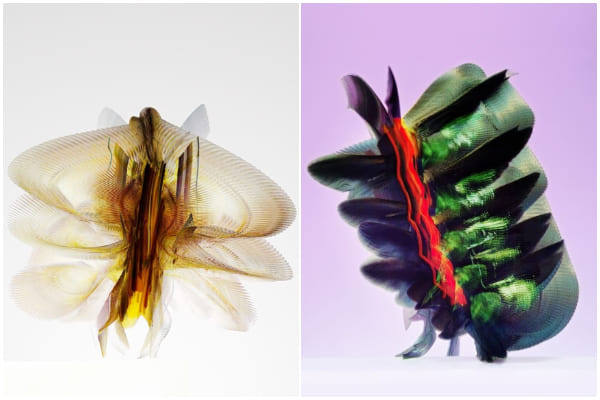
Flying insects move so quickly that they are hard to follow, but new technology and some smart ideas have helped Spanish photographer Xavi Bou do just that. After spending 10 years focusing on birds in flight for his Ornithographies project, he turned his attention to insects.
For Entomographies, he uses high-speed video footage taken by Adrian Smith, an insect expert at North Carolina State University, to study and record how insects move. Bou then picks multiple frames and combines them into single images that show the fast movements of one or more insects through space and time.
With Smith’s help, Bou has captured the aerial tricks of wasps, the jumps of leafhoppers, and the fluttering of butterflies in amazing detail. He hopes that by doing this, he can make people more aware of the decline in important insect populations around the world.
1. Zebra longwing
This butterfly, which is common in many areas of the Americas, really fits its name. It can fly very high with just a few flaps of its large wings.
 Image source: nationalgeographic
Image source: nationalgeographic
2. Two-lined spittlebug
This insect, which comes from the eastern United States, is often seen as a pest because it likes to eat grass. Its springy back legs can make it jump into the air like a rocket.
 Image source: nationalgeographic
Image source: nationalgeographic
3. Yellow-collared scape moth
Unlike most moths, this North American species flies during the day. Its shiny blue-black wings sparkle in the sunlight.
 Image source: nationalgeographic
Image source: nationalgeographic
4. Ailanthus webworm moths
These tropical moths have spread farther north in the U.S. Because of their larval host, the invasive tree of heaven, they are now one of the most common backyard moths in the country.
 Image source: nationalgeographic
Image source: nationalgeographic
5. Common stonefly
Mostly found in eastern North America, this insect starts its life as an underwater nymph in forested streams or rivers. Then it leaves the water, sheds its skin, and becomes an adult with wings.
 Image source: nationalgeographic
Image source: nationalgeographic
6. Green lacewings
Eighty-seven species of this insect have been found in the U.S. and Canada. Since they eat a lot of unwanted plant pests like aphids and mites, they are often used to naturally control these pests.
 Image source: nationalgeographic
Image source: nationalgeographic
7. Grapevine beetle
This insect, fittingly named, eats the leaves and fruit of grapevines, both wild and farmed, but it doesn’t do much damage to the plants. As a type of scarab beetle, it often flies in a curved path.
 Image source: nationalgeographic
Image source: nationalgeographic
8. Oak treehopper and green treehopper
Treehoppers are known for their uniquely shaped pronotum, the part behind their head, which often looks like plant parts to hide from predators. They can jump well thanks to special muscles.
 Image source: nationalgeographic
Image source: nationalgeographic
9. Banded orange
This brightly colored butterfly can be found from Mexico to Brazil. Before mating season, male butterflies look for mineral salts, sometimes even drinking salty fluids from the skin, eyes, and nostrils of other animals.
 Image source: nationalgeographic
Image source: nationalgeographic
10. Sapho longwing
Longwings can live for 6 to 7 months, longer than most butterflies. This type, found from Mexico to Ecuador, has shiny blue wings, which is why it’s also called the Sapphire longwing.
 Image source: nationalgeographic
Image source: nationalgeographic
ANIMALS
Eagle and Fox in an Epic Midair Battle Over a Rabbit, Were Captured by a Photographer

Wildlife photography often depends on the perfect combination of good timing and the right place.
That’s exactly what happened when Kevin Ebi, an experienced wildlife photographer, captured an incredible battle between a bald eagle and a red fox, both competing for a rabbit meal.
In a detailed blog post, Ebi shares the fascinating series of events that unfolded while he was photographing foxes in San Juan Island National Historical Park, located in Washington state.
Ebi noticed a lively group of eight fox kits as they began their hunting lessons. Suddenly, they spotted a rabbit, and a thrilling chase ensued. Eventually, one of the foxes emerged as the winner, proudly carrying the rabbit across the field.
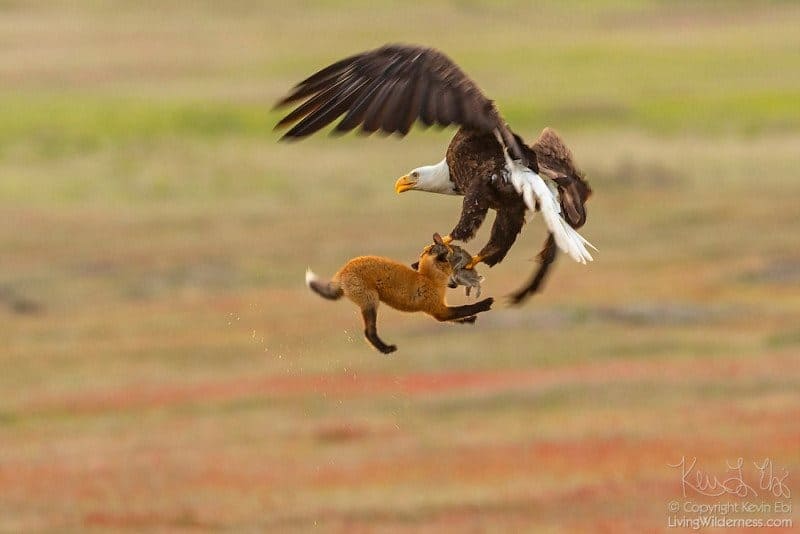 Image source: Kevin Ebi
Image source: Kevin Ebi
Ebi shares what happened at that moment: “As I followed the fox with my camera, a sudden bald eagle cry caught my attention. It was swiftly approaching, clearly aiming for the rabbit. I quickly focused on the fox, anticipating a quick turnover of events.”
To Ebi’s astonishment, instead of a quick surrender, the situation turned into a intense fight in the air.
The eagle used its power to lift the fox and rabbit high up in the sky. Even while airborne, the fox attempted to break free by swinging back and forth.
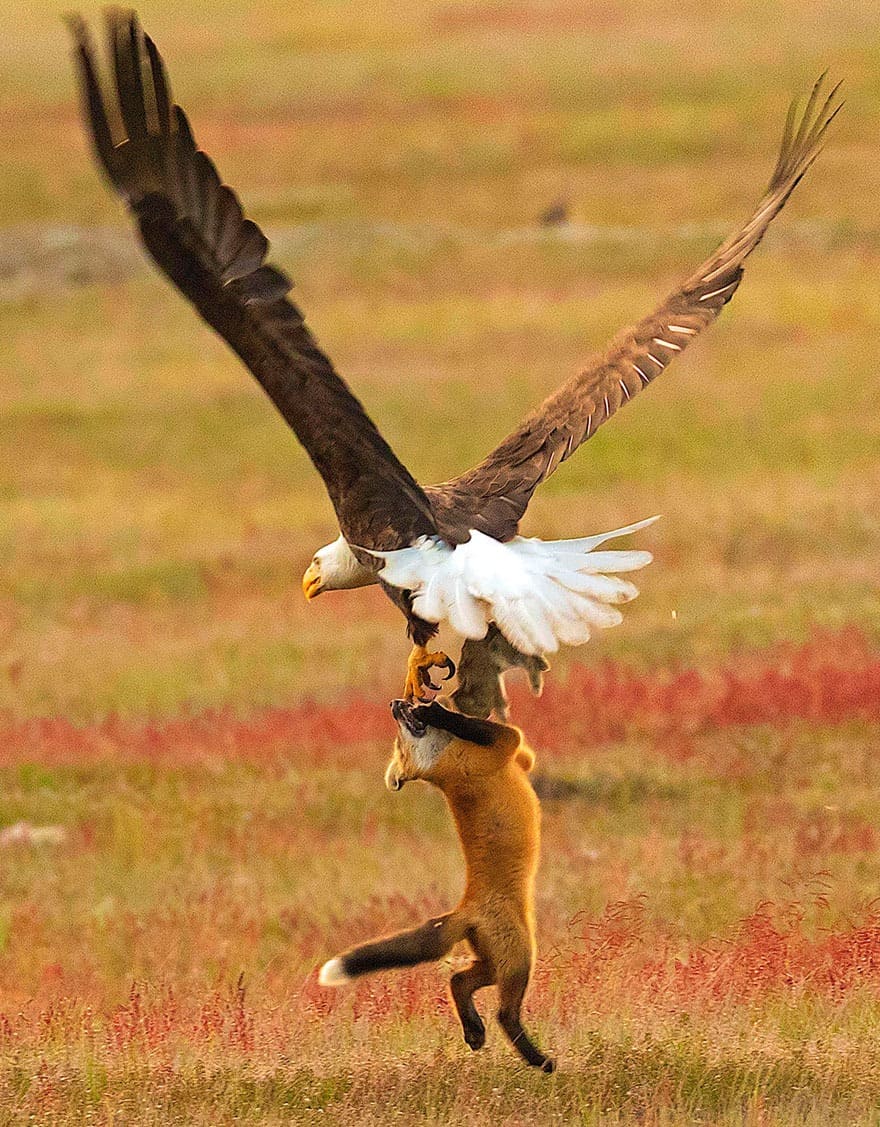 Image source: Kevin Ebi
Image source: Kevin Ebi
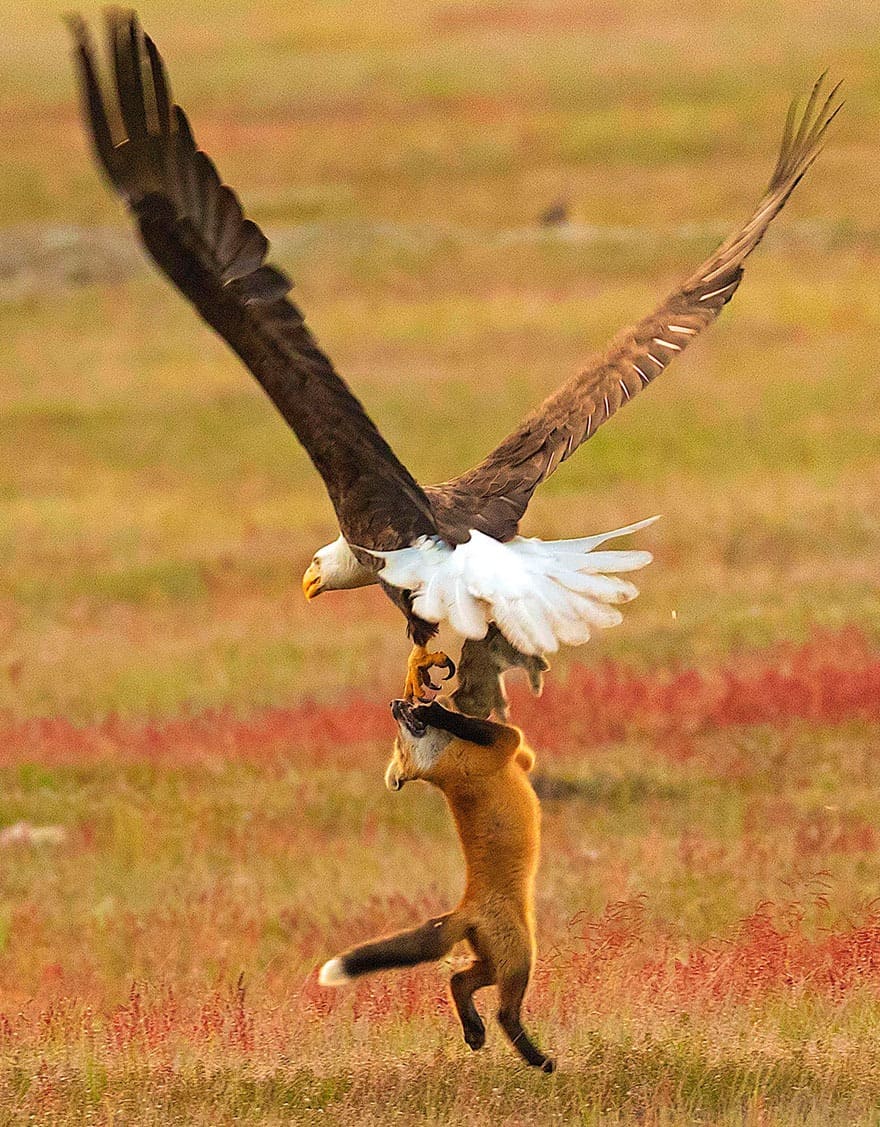 Image source: Kevin Ebi
Image source: Kevin Ebi
 Image source: Kevin Ebi
Image source: Kevin Ebi
In the end, the eagle moved the rabbit to its other claw, causing the fox to let go. The intense battle came to an end in less than 10 seconds.
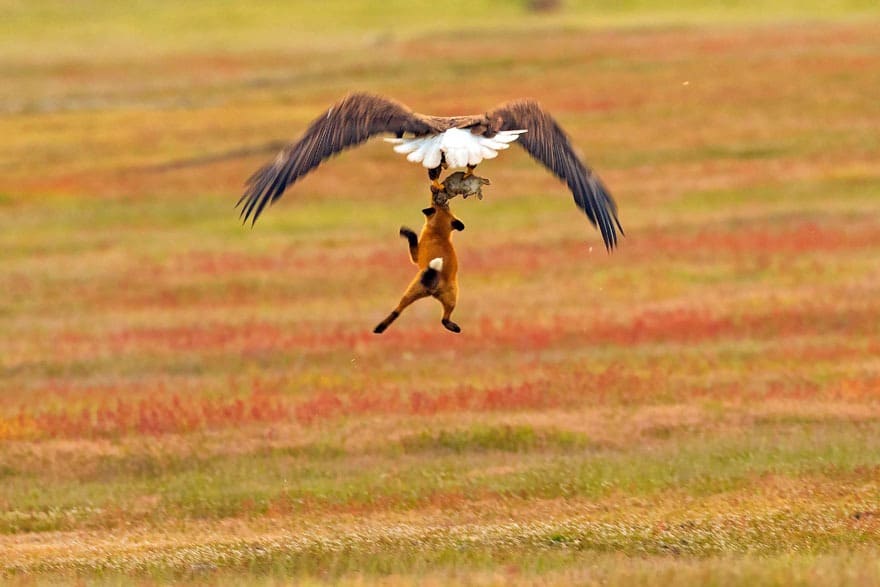 Image source: Kevin Ebi
Image source: Kevin Ebi
For those worried about the fox’s well-being after the fight, Ebi reassures that it was not injured. The fox swiftly bounced back from the encounter and resumed its playful behavior with the other young foxes, showing no visible wounds from the aerial clash.
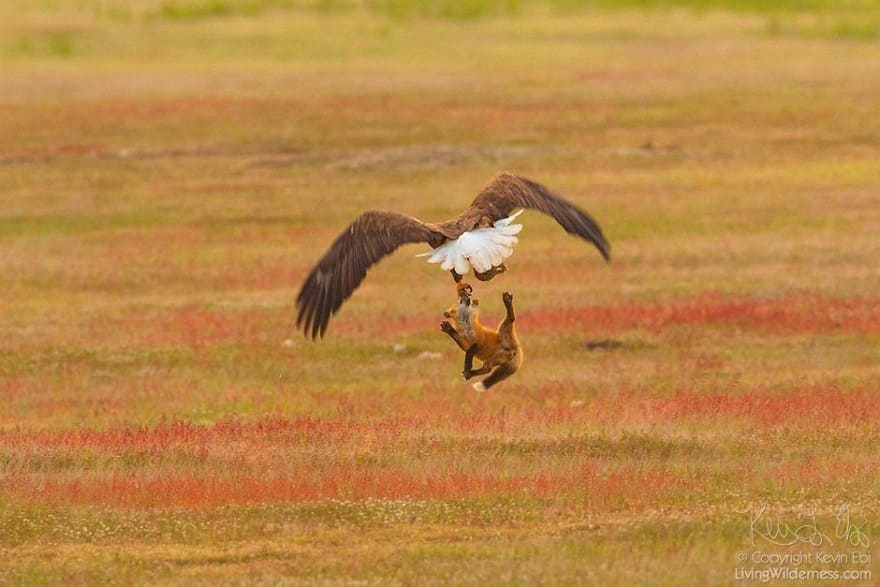 Image source: Kevin Ebi
Image source: Kevin Ebi
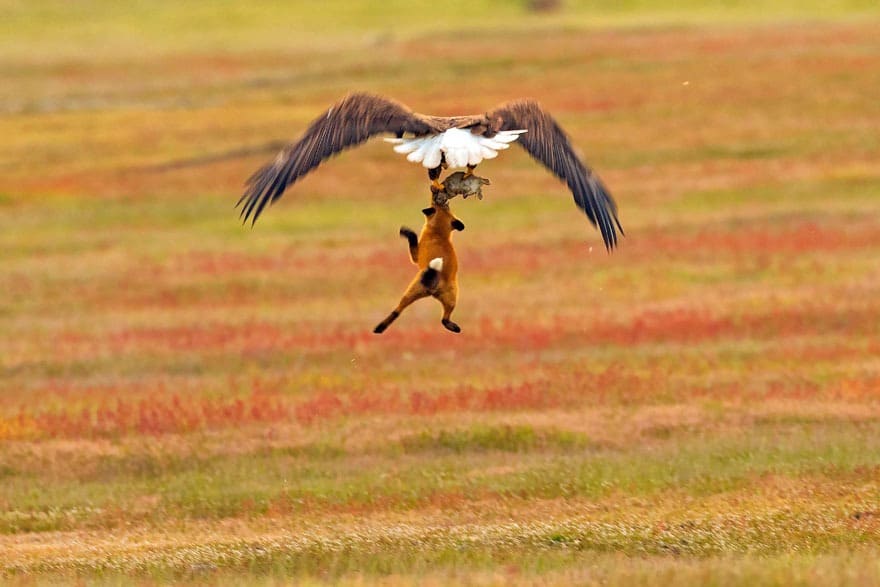 Image source: Kevin Ebi
Image source: Kevin Ebi
 Image source: Kevin Ebi
Image source: Kevin Ebi
 Image source: Kevin Ebi
Image source: Kevin Ebi
-

 GARDEN10 tháng ago
GARDEN10 tháng ago4 Easiest Ways to Get Free Plants
-

 ANIMALS10 tháng ago
ANIMALS10 tháng agoBritish Angler Caught Huge 67-Pound Goldfish in the World
-

 FUNNY10 tháng ago
FUNNY10 tháng ago30 Funny and Perplexing Photos That Make You Laugh All Day
-

 FUNNY10 tháng ago
FUNNY10 tháng ago30 Weirdest Things That People Came Across On The Subway
-

 GARDEN9 tháng ago
GARDEN9 tháng ago30 Shimmering Side Yard Landscape Ideas
-

 DIY & CRAFT10 tháng ago
DIY & CRAFT10 tháng ago19 Easy and Creative DIY Ideas to Enhance Front Yard
-

 ANIMALS10 tháng ago
ANIMALS10 tháng agoKindhearted Driver Rescues Skinny Dog Hiding Near Highway Thanks to His Eagle Eye
-
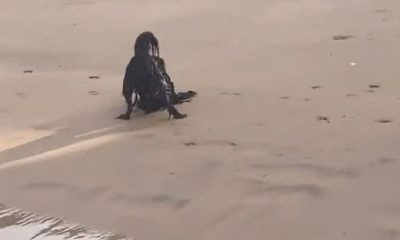
 ANIMALS10 tháng ago
ANIMALS10 tháng agoMore Than 3 Million People Baffled by Video of Strange Figure on the Beach

